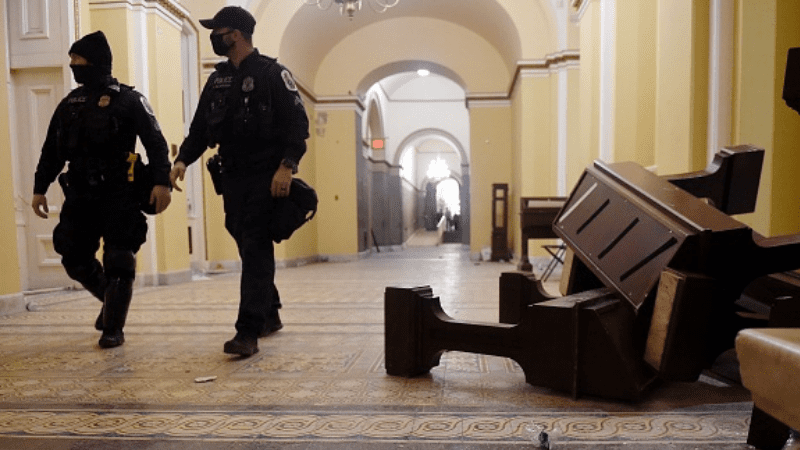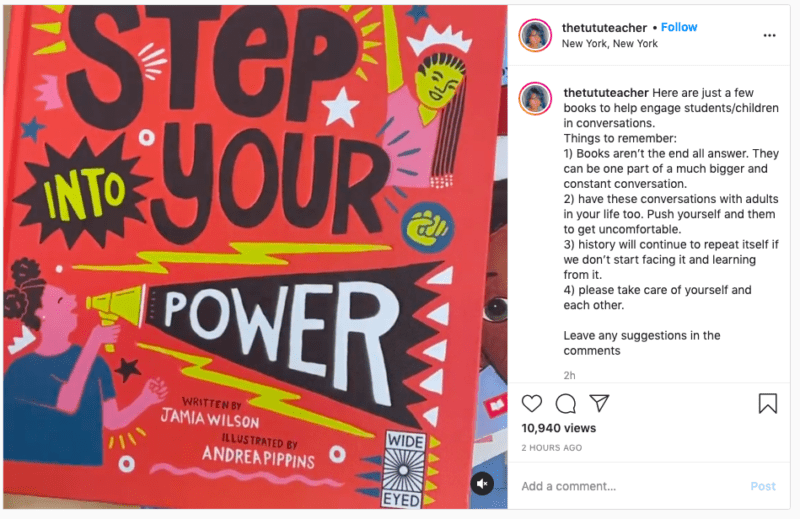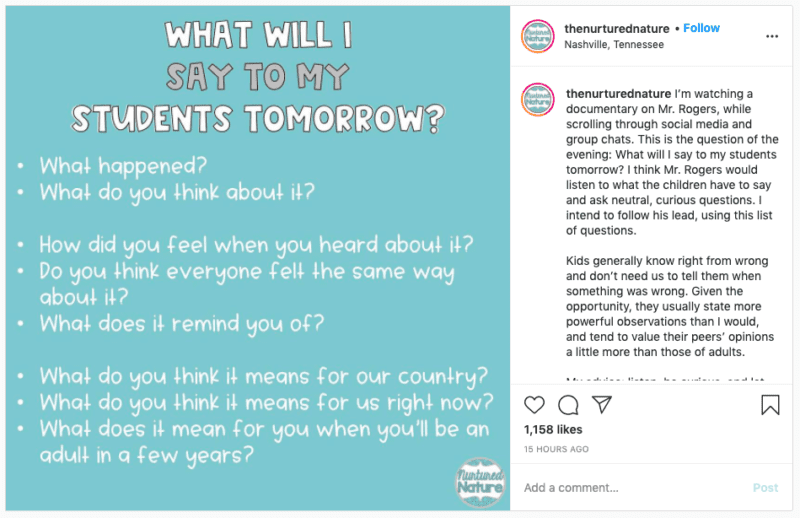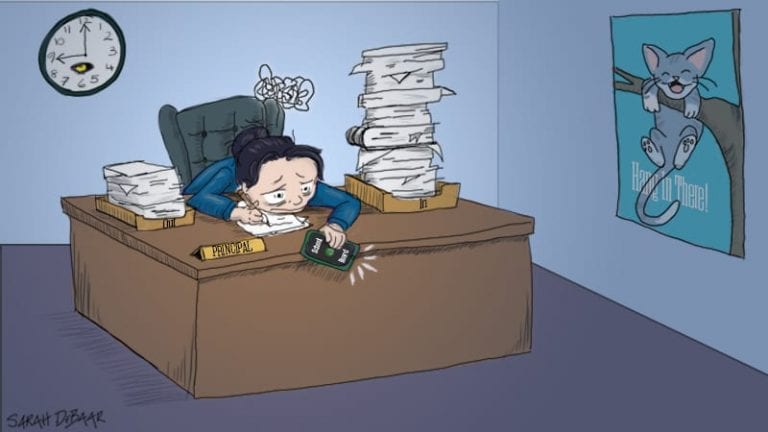We’re all still reeling from the events in D.C. and trying to process our feelings about what happened. But as teachers, we’re also tasked with talking to the students in our care about the attack on the Capitol. If you’re feeling at a loss yourself, that might seem overwhelming. Here are some resources to help you address this topic with your class:
Tips from Teachers
Teachers in our Helpline group on Facebook came together to offer their colleagues advice on how to address students’ concerns about what happened.
Create a safe space
“I think setting the tone stating that you want to give a safe space for them to talk about how they feel without fear of any backlash or arguments, just an expression of their feelings.” —Allison
“If they want to talk about it, it’s better to let them air their feelings and talk about it—mediated. Your job isn’t to tell anyone who is right or wrong, but give a safe place to talk about what’s happening and share their concerns.” —Erin
“Our children need a safe place to express their anxiety or worries and seek answers that are suited to and appropriate for their age. Not answering or responding to their questions is not acceptable. Allow them to come to their own conclusions with your questions and guidance.” —Georgia
Let students lead
“Have them come up with the questions. Have them find the answers. Teach the vocabulary that pops up along the way. Stay out of the argument and guide the conversation to lead to more questions.” —Teria
“I think you should let them guide the discussion, and try to keep your personal political opinion out of it. I think we all can agree these actions are reprehensible, and there’s no motive other than hate/anger. If the conversation gets hateful, then intervene, but I think we don’t give our students enough credit. They are smart individuals and should have their voices heard. I guess just let them know you’re there for them.” —Valeria
“Let them ask all questions they need to and answer as neutrally, safely, without emotion, and looking at this historically, as you can.” —Diane
Make it a lesson
“Have them watch the reporting and come to their own conclusion. Support critical thinking.” —Tiffany
“I would explain the difference between protesting, rioting, and terrorism, and have them decide what this is for themselves.” —Kela
“I’m going to use BBC news website, so it’s not from any American form of media. Allow them to research for 10 minutes, and respond to an open-ended question to me only about summarizing what happened, using evidence.” —Molly
Resources for Having Conversations
Books
@thetututeacher has it right. Books won’t solve all problems, but they’re a great place to start. Use one of these titles to help engage young students in conversations about what’s going on in our country.
Questions
We love these “neutral, curious” questions from @thenurturednature. This is a great starting place, especially for those of us having trouble finding the words.
You’ll also want to check out this blog post from Kylene Beers, which has some excellent guidance on asking questions.
Lessons
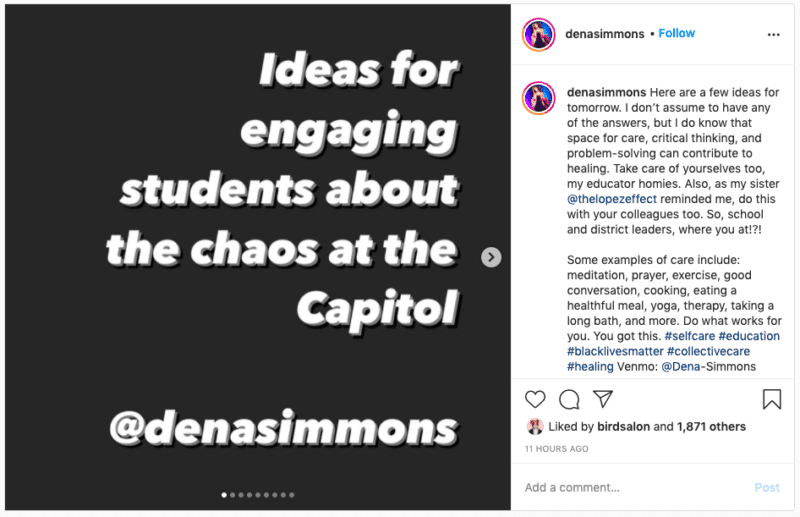
@denasimmons presents eight ideas for addressing the events at the Capitol with kids. We especially like her activity in which you share coverage of Black Lives Matter protests and invite students to compare and contrast media coverage.
Beyond the Spotlight has excellent resources for teachers in the days following the attack on the Capitol, including activities like analyzing images, comparing police response, and sharing media from outside the U.S.
This 60-Second Text: Can You Spot The Difference? activity from Woke Kindergarten can serve as an effective entry point with young children.
PBS is now offering three ways to teach the insurrection at the U.S. Capitol, including watching and discussing this video:
Student Well-Being
We need to help our students feel safe and secure now. Take a look at the National Association of School Psychologists’ Guidance on Student Well-Being in the Context of the 2020 Election. Their recommendations to reassure children, reinforce appreciation of diversity as an American value, and discuss the importance of respecting the democratic process, remain relevant. You’ll also want to read their resource specifically on supporting marginalized students at this time.
Teacher Preparation
Facing History’s article “Responding to the Insurrection at the U.S. Capitol” is full of practical ideas. We highly recommend you do the “Before Teaching” work suggested here if at all possible.
What resources have you found for teaching about the attack on the Capitol? Please share them in the comments. And for more resources, be sure to subscribe to our newsletter!
Plus, How to Speak Up and Take Action When Your School Isn’t Anti-Racist.

